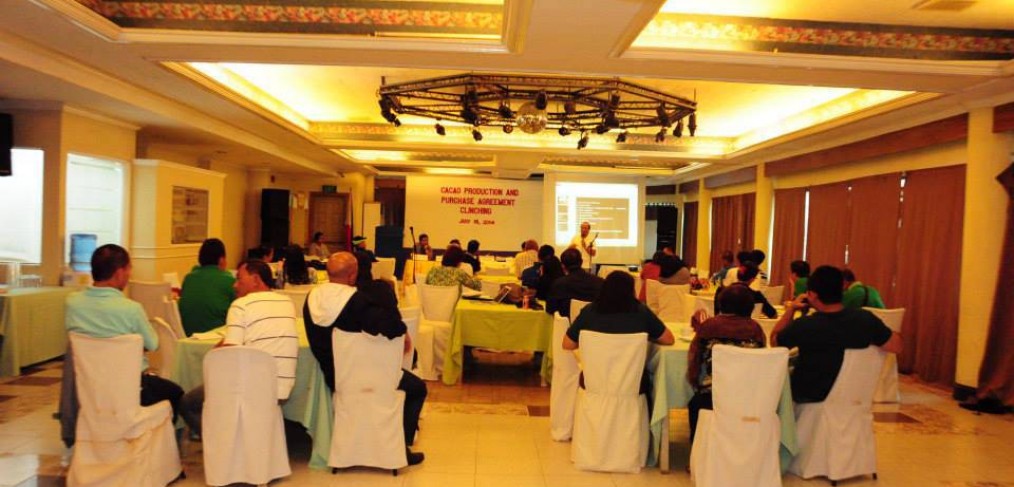Source: Philippine Daily Inquirer
How vital is productivity in achieving prosperity?
This issue is of strategic concern to Philippine development. As of 2012, some 25.2 percent of Filipinos were poor. Farmers and fisherfolk are poorer at 39.2 percent and 38.3 percent, respectively. Urban residents have a poverty incidence of only 13 percent.
If the urban-rural residents are split halfway, the poverty incidence of the rural folks would be almost three times that of urban resident at 37.2 percent. Today, there are slightly over 100 million Filipinos. This means almost 18.6 million are rural poor, and 6.5 million urban poor. Or 74.4 percent of the poor are in the rural areas.
To achieve rising and shared prosperity, “productivity growth is necessary but not sufficient to support broad-based well-being, which also depends on quality of life, health, and environment,” according to Catherine L. Mann, chief economist at the Organization for Economic Co-operation and Development (OECD) in her article entitled “Designing policies that support growth”, which appeared in the McKinsey Global Institute in January 2015.
“Productivity growth both affects and is affected by the distribution and volatility of employment and income … and these feed into well-being, both within and across generations, ” added Mann.
Mann’s analysis reveals the relative importance of different avenues of improving productivity. “The diffusion of best practices across firms within a sector, and the uptake of productivity-enhancing lessons learned across sectors can increase productivity within an economy and allow it to catch up to the frontier.”
“Even in countries that are home to frontier firms, there is incomplete diffusion of known technologies within and, even more so, between sectors. Policies that support business and worker dynamism and the reallocation of resources promote this within-and between-sector diffusion and catch-up.
But diffusion and catch-up are not enough to ensure rising prosperity: Innovation that pushes out the technological frontier is also needed, and this depends on the extent and efficiency of resource reallocation, and the magic and confidence of ideas. ”
Transpose to Philippine agribusiness
Except for a few products, Philippine farm productivity is behind those of peer Asean countries—Indonesia, Malaysia, Thailand and Vietnam. These include rice, corn, coconut, sugarcane, coffee, cacao, oil palm, rubber and others. The exceptions are banana, pineapple, and a few others.
The typical farmers in Thailand can out-produce Filipino farmers in corn, sugarcane, rubber, cassava, dairy and hogs. Those from Indonesia, in oil palm, coffee and cacao. Those from Vietnam are more than three times more productive in coffee and rubber. They are ahead in cashew, pepper and rubber.
The irony is that there are great farmers across the so-called low productivity agriculture. They can out-produce the good farmers across Asean. However, they are few and far between.
The productivity differential is caused by what Mann discussed as the limited diffusion of best practices across firms within a sector, and innovation that pushes out the technological frontier is also needed.
First, the limited diffusion of best practices cuts across the small farm sectors. This is because of a weak extension system at the municipal local government units. This issue emerged after the passage of the 1991 Local Government Code. Scholars, like Cristina David and Eliseo Ponce, have long advocated a sound setup at the provincial level.
There will be subject matter experts and extension service will be under the control of a professional manager. It has been over 20 years, and the “light” is still in the woodworks.
Second, innovation that pushes out the technological frontier. The banana and pineapple industries have pushed their technological frontiers without government support. The farm yields are among the highest in the world. No wonder, they are export-competitive and key players in Asia and the world.
Asean peer Vietnam has pushed the technological frontier for coffee, and Thailand for sugar and cassava.
Third, there are already advances in the frontier, such as hybrid rice (SL Agritech), cacao (Kennemer Foods), and coffee (Nestle). There are companies in vannamei shrimp culture, too.
There are also tunnel-ventilated houses of swine, broiler chickens, and layers. Across Southeast Asia, notable advances have been made in rubber, oil palm seeds, cassava and giant napier.
So why is Philippine agriculture not as productive as Asean peers?
Richard Rumelt, strategy guru at the University of California Los Angeles, says: “Good strategy requires leaders who are willing and able to say no to a wide variety of actions and interests. Strategy is at least as much about what an organization does not do as it is about what it does.”
“Bad strategy tends to skip over pesky details such as problems. It ignores the power of choice and focus, trying instead to accommodate a multitude of conflicting demands and interests.”
Sounds familiar?- Rolando T. Dy

